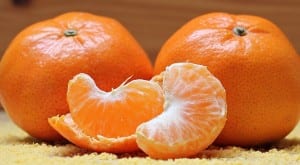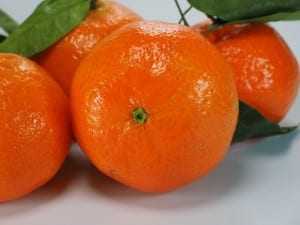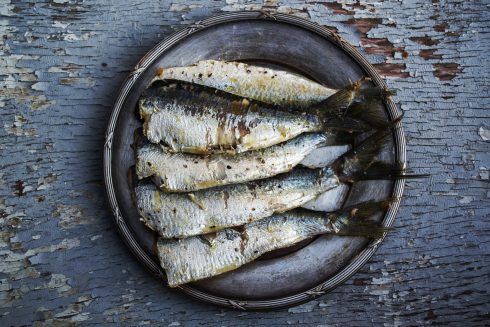 DO you know your tangelos from your tangerines? Could you recognise a ponkon? Aren’t they all just oranges anyway?
DO you know your tangelos from your tangerines? Could you recognise a ponkon? Aren’t they all just oranges anyway?
Not quite. It is thought that all contemporary citrus fruits are descended from three original varieties: the mandarin, the citron (related to lemons) and the pomelo (similar to a grapefruit).
Modern-day oranges are a hybrid of mandarins and pomelos. Most people see mandarins as a type of small orange, but in fact they are a completely different variety. Other fruits such as tangerines, clementines and satsumas are part of the mandarin family.
 Mandarins were first cultivated in ancient southeastern China, having evolved from a wild fruit found in India. Fashionable Chinese women used to hold these fruits in their hands so that they would be scented by it. Mandarins were a relatively late arrival to the West – not appearing in England until 1805. From there they spread to Italy, and then Spain and the rest of the Mediterranean. The name comes from the word for a Chinese businessman, which arrived in English from the Sanskrit word mantri, via Malay and Portuguese. Below is a handy guide to telling the difference between the most common types of mandarin.
Mandarins were first cultivated in ancient southeastern China, having evolved from a wild fruit found in India. Fashionable Chinese women used to hold these fruits in their hands so that they would be scented by it. Mandarins were a relatively late arrival to the West – not appearing in England until 1805. From there they spread to Italy, and then Spain and the rest of the Mediterranean. The name comes from the word for a Chinese businessman, which arrived in English from the Sanskrit word mantri, via Malay and Portuguese. Below is a handy guide to telling the difference between the most common types of mandarin.
Clementine
The clementine is a seedless variety of mandarin, believes to have been developed in Algeria around the beginning of the 19th century by a French missionary called Marie-Clement Rodier. It’s becoming very popular with farmers, as unlike other species it will not develop seeds even if planted near fruits with seeds in. It’s also easier to peel than a tangerine – leading to the moniker ‘easy-peelers’.
Satsuma
 The skin of this fruit is a bit tighter than that of a clementine. It’s another seedless variety, and is very popular as a tinned fruit. It’s a less common fresh variety than clementines or tangerines, as it’s extremely tender and can be prone to shipping damage. It tastes similar to a clementine, although some claim it to be a little sweeter. Like all mandarins, it is of Chinese origin, but it was introduced to the West via the Japanese province of Satsuma in the 16th century.
The skin of this fruit is a bit tighter than that of a clementine. It’s another seedless variety, and is very popular as a tinned fruit. It’s a less common fresh variety than clementines or tangerines, as it’s extremely tender and can be prone to shipping damage. It tastes similar to a clementine, although some claim it to be a little sweeter. Like all mandarins, it is of Chinese origin, but it was introduced to the West via the Japanese province of Satsuma in the 16th century.
Tangelo
A tangelo is a part-mandarin, a cross between a tangerine and a grapefruit. It’s especially juicy, and doesn’t have the acidity grapefruits are known for. Its most famous variety is the minneola, recognisable for its distinctive ‘little nose’ or bump at the top of the fruit.
 Tangerine
Tangerine
Tangerines are distinctive for their dark, reddish skin. The name comes from the Moroccan port of Tangiers, through which these fruits were introduced to Britain from China in the 1800s. The fruit is not as sweet as other varieties, and it has seeds and a slightly tougher skin.
Cherry orange
Also known as a baby mandarin and a tiny tangerine, this fruit has become popular in British supermarkets for its marketing value, as it is novelly small – about the size of a 50c coin. It is almost seedless, and very tender and sweet. Despite its most common name, it is a type of mandarin. For a long time it was not known outside of Asia, as it was a rare fruit cultivated only for Chinese royalty.
 Ponkon
Ponkon
A hybrid of a mandarin and a pomelo, ponkons are sweet, vibrant and tangy. They are easily recognised by the raised bumped at the top, and the large gap in the centre of the fruit. They are very popular at the time of Chinese New Year.












Very interesting! What I do not understand: You say, the mandarin was first introduced to the West in 1805 (via Tanger). But then you say, the Satsuma, which is a special kind of mandarin, was introduced to the West via Japan in the 16. century. So which date can we believe?
To my knowledge the Satsuma was first introduced to the West in the 19th century by the spouse of a diplomat at the US embassy in Japan.